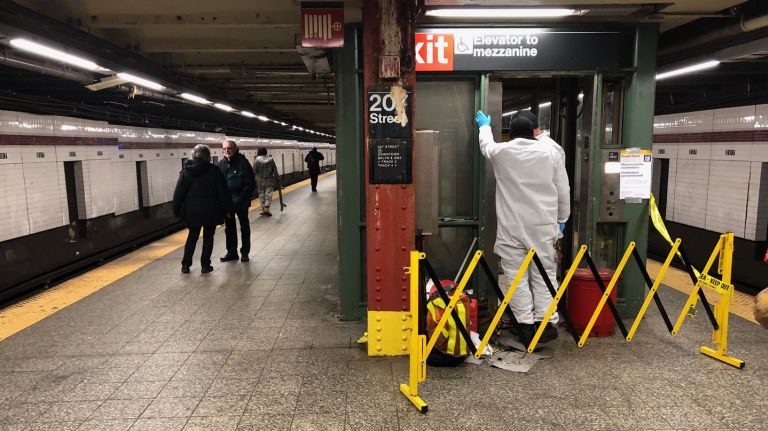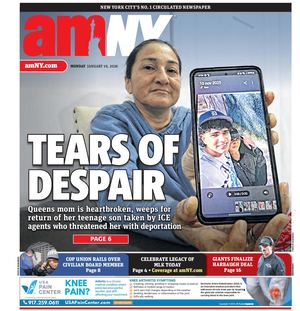
About half of the neighborhoods served by the New York City subway system don’t have a wheelchair-accessible station, according to a new report.
“Service Denied,” published Tuesday by City Comptroller Scott Stringer, highlights the gaps in the city’s expansive and notoriously inaccessible subway system and details its impact on a neighborhood level.
Only a quarter of the MTA’s 472 subway stations are compliant with the Americans with Disabilities Act, leaving 638,246 seniors, small children and mobility-impaired residents living along subway lines without an accessible subway station, according to the report.
“We recognize through this report that we’re not only just talking about stations. We’re actually talking about people — people who are denied access, denied job opportunities, denied housing opportunities all because we now know entire neighborhoods are without accessibility for people with disabilities,” said Stringer at a news conference outside City Hall Park on Tuesday. Stringer defined the identified areas as “ADA Transit Deserts.”
The report lists all of the city’s 189 neighborhoods. Sixty of those neighborhoods have at least one accessible subway station; 62 don’t have any accessible stations, while another 67 neighborhoods don’t have any subway station at all, per the report. Stringer said those ADA limitations directly impact housing and job opportunities.
Only 23 percent of mobility-impaired city residents are employed or actively looking for work, compared to 74 percent of non-disabled residents. Stringer reasons that’s at least in part because of the difficulty people with disabilities have in reaching the 2.7 million jobs in areas with at least one accessible subway nearby and even harder to get to the city’s 608,258 jobs in the neighborhoods with only inaccessible stations.
The majority of the neighborhoods with inaccessible stations are in the outer boroughs, where rents are cheaper. The median rent for the neighborhoods with at least one accessible station is $1,310, almost $100 a month higher than neighborhoods with only inaccessible stations.
“There’s also a limitation to what schools [people with disabilities] can get to. If we’re denying educations, employment, I don’t know how we can include them in mainstream society and give them fulfilling lives,” said Chris Pangilinan, a program director at TransitCenter and a wheelchair user. “The subway is everything.”
The report comes as NYC Transit president Andy Byford searches for funding for Fast Forward — his 10-year plan to modernize transit service in the city. The plan also calls for more than 50 station accessibility projects in its first five years to ensure commuters are no more than two stations away from an accessible station. Byford has emphasized accessibility as one of his major focuses at the authority. He’s hired an accessibility chief, Alex Elegudin, and has said that he’d like to get as many stations ADA-accessible as possible in 15 years.
“New York City Transit has never been more committed to an accessible transit system than it is right now,” said Shams Tarek in a statement. “We’re also bolstering our completely accessible bus network, and we’re undertaking an overhaul and modernization of Access-a-Ride — all of which will lead to dramatic accessibility improvements.”
Fast Forward, which unofficial estimates peg at more than $30 billion, has garnered near universal support around the city and through MTA’s board, but early funding talks have been strained. The mayor and the governor have sparred over who is responsible for creating new funding sources for the plan. Budget watchdogs believe that obligation rests with the state, which can enact congestion pricing or new, regional taxes. Stringer, who also supports Fast Forward, said the city should have a role in bringing in new revenue, though he recommends the state legislature introduce an $8 billion Transit Bond Act in the next session.
A transit bond act was last placed on ballots in 2005 and was approved by 56 percent of state voters. Stringer said his plan should stress the need to find new funding for the MTA.
“Andy Byford has put forth a plan that many of us are hoping for. But if we think the job is done, it’s not,” Stringer said. “I know, as a former legislator, that great proposals die from a lack of funding. And we have to tie the funding to the plan or we’ll continue to be back here year after year.”




































